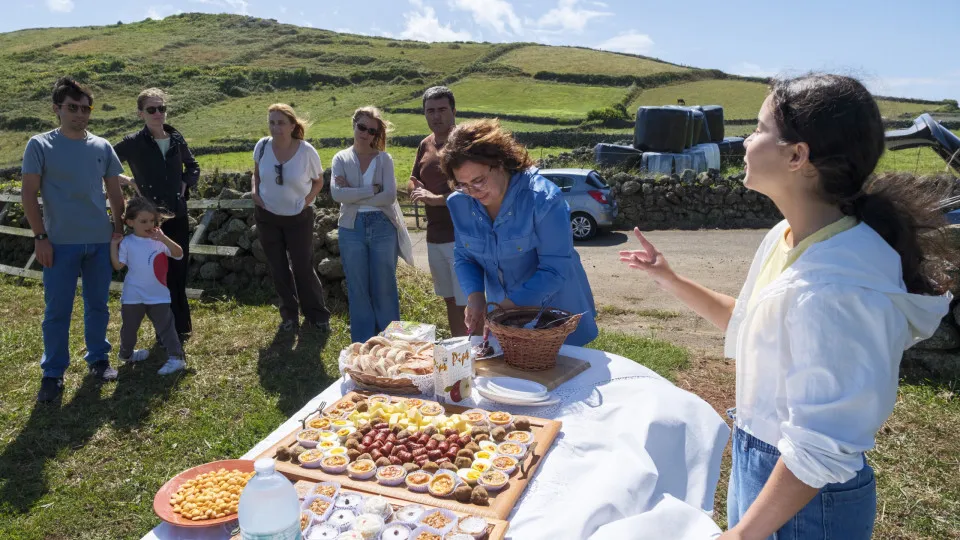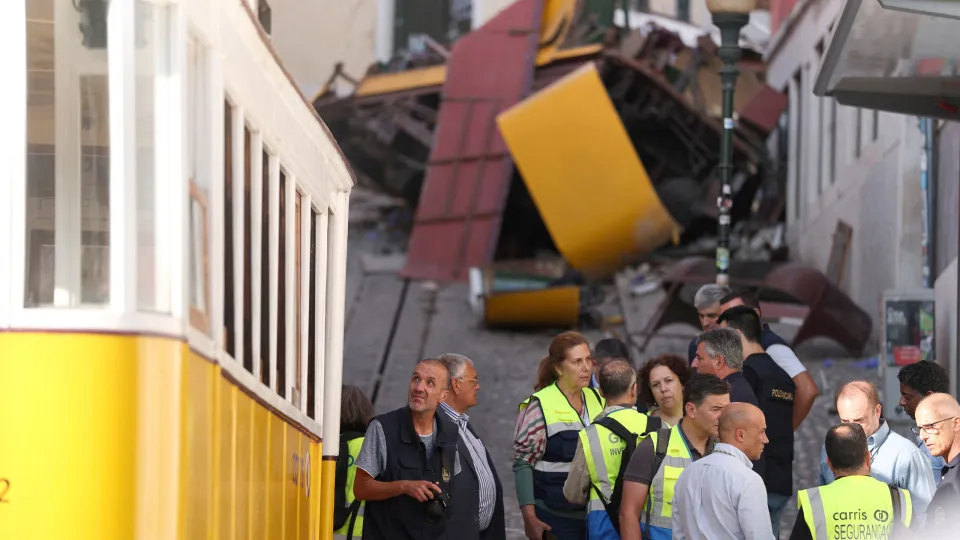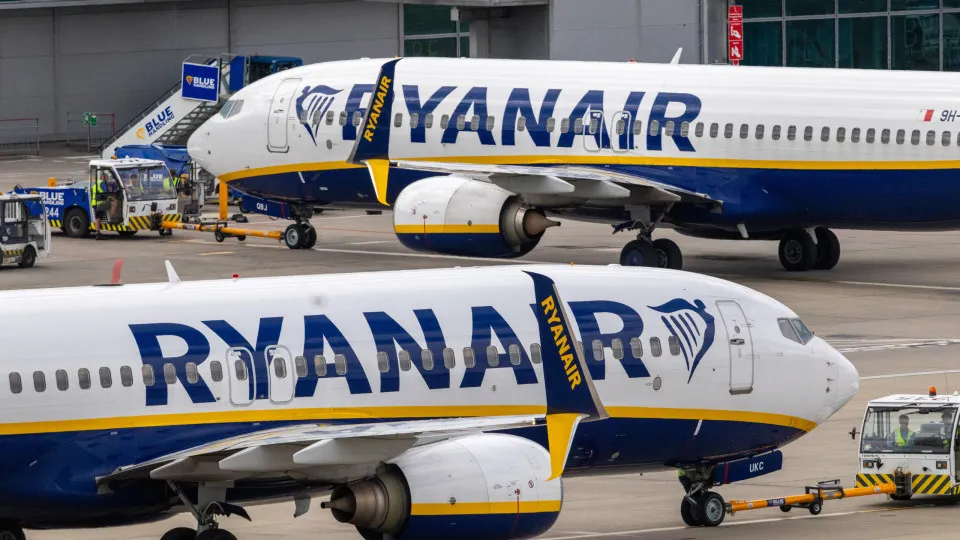
“The Azores are a splendid place to spend a holiday, and visitors seek diverse experiences. This is one of the top attractions on Terceira Island. It is undoubtedly something that tourists will remember,” says Anselmo Pires, a farmer involved in the initiative.
Hailing from a lineage of farmers, Anselmo became one of the pioneers in organic milk production in Portugal in 2017. When the Angra do Heroísmo Municipality introduced the Milk and Cheese Route, he embraced a new challenge.
The initiative launched in May 2024, but Anselmo welcomed the first tourists only at the end of September. Since then, over 500 visitors have toured his pastures.
“I never imagined we would see such a turnout, but fortunately, it’s going well, and I believe there is room for growth,” he notes.
Anselmo’s day begins at 7:00 am local time [one hour ahead in Lisbon], starting with the first milking, as tourists eager to explore a different world reach out to him.
By 10:30, the first group, consisting of six adults and three children, arrives at the pasture. The sky is clear, with Praia da Vitória city lying in the distance, washed by the ocean.
They encounter a typical Azorean landscape: a green patchwork of fields bordered by stone walls.
The cows, primarily Holstein Friesians, feature the characteristic black and white markings, common in the archipelago.
Briosa, a completely black Jersey cow, greets tourists at the entrance.
“Whenever she sees a stranger arriving, she stops what she’s doing and approaches them. She already anticipates getting more feed,” the farmer explains.
He adds: “She is very gentle. Children from two years and up can milk this cow.”
The farm has 32 cows, which Anselmo can differentiate, each responding when called by name.
As Briosa approaches the tourists, hoping for a pat, Anselmo explains that milking occurs twice daily, regardless of weather, and that the cows, often dubbed ‘happy,’ following a visit by President Cavaco Silva to the Azores, remain outside year-round, primarily grazing on grass.
After addressing all questions, the much-anticipated moment arrives for the youngsters and Briosa, waiting for her feed.
Anselmo demonstrates hand milking, a skill he’s honed since childhood. While adults struggle to mimic, young Maria, aged four, succeeds immediately.
After sampling the milk, the aspiring farmers move on to the next field where Meia Lua, a two-and-a-half-month-old calf, eagerly awaits a bottle of milk.
She’s the second calf born on the farm to be named by tourists, following Gisele, who was christened by a visitor celebrating a birthday on her birth date.
Anselmo has hosted tourists from South Africa, the Americas, Canada, Brazil, France, Slovenia, and India.
Many came with children, yet the farm has also hosted birthday parties and even bachelor parties.
The visit wraps up with a table laden with local delicacies, including Alcatra sandwiches (a local delicacy), fresh cheese made from farm milk, homemade sweets, and sausages.
The project is a family affair. Donzília, Anselmo’s wife, prepares the sweets while their 12-year-old daughter Gabriela provides explanations in English for international visitors.
“I don’t think this life with cows is for me,” admits Gabriela, uncertain about her future career.
“I enjoy the interaction and hearing people’s feedback, knowing what they enjoy,” she elaborates.
Among the stories she’s gathered, one stands out—a group of Indian visitors signaled the end of their visit by blessing themselves with a cow’s tail.
“We never thought anyone would pay to see cows. My grandmother used to say she’d pay not to go,” she jokes.
At nearly 80, Anselmo’s father, João Pires, often joins in, reminiscing about trodding these fields on foot or a mule for milking before machines existed. “I still enjoy visiting. I was raised in this,” he explains.
Despite devoting a lifetime to the land, it never crossed his mind that his vocation would intrigue island visitors: “It never occurred to me.”
For Anselmo Pires, this presents a chance for farmers to reap “some financial return” from tourism, which has long benefited from agriculture’s “invisible work.”
“Farmers are the Azores’ gardeners, and everyone comes to see the landscape, our land management, the patchwork quilt. This is created by farmers’ labor,” he stated.
Even without a defined product, tourists showed interest: “While we were working, tourists would drive by, asking questions. Some would enter the ‘cerrado’ [field] hoping to touch a cow.”
Journalist Raquel Marinho, creator of the podcast “The Poem Teaches to Fall,” swapped poetry books for a morning with nature.
Accompanying her daughter, she explored Anselmo Pires’ farm, discovering an authentic experience blending tradition with modernity.
“We were warmly welcomed with great kindness. It’s not a rehearsed show for guests; it’s not overly touristy. I hope it remains intimate for personal interaction and attention,” she remarked.
Despite associating the Azores with dairy, the visit enlightened her to the organic milk of which Anselmo speaks proudly.
“When I go to the supermarket, I’ll look for this milk and buy it,” she vowed.
Lisbon-based lawyer Filipa Silva also left the farm with a newfound appreciation for the products: “I’d seen this organic milk but didn’t realize its significance. Now I understand the often-mentioned ‘happy cows’ phrase.”
“Experiencing this firsthand allows one to grasp the effort behind producing a litre of milk arriving at our homes, requiring waking at 6:00 am regardless of weather,” stated Pedro Roma.
The couple brought Maria to see the iconic cows of the Azores, which captivated the four-year-old, distracting her from the conversation.
“It’s a paradise, a different pace, the scenery, the ambiance. It’s an incomparable peace,” emphasized Filipa.
Visiting the Azores for the first time, Kay Hage from Germany, along with his wife and 10-year-old twins, sought activities offering connection with animals and island traditions.
They also wanted to introduce their children to a job rooted in family history.
“Their grandfather was a milk producer before retiring. A few years back, he produced around 80,000 liters of milk daily, managing a farm with 1,500 cows,” Kay recounted.
Anselmo Pires believes many still traverse Terceira Island unaware of the Milk and Cheese Route’s existence, yet he remains optimistic about its success reaching other islands.
“I think acceptance will only grow. People seek genuine products and our warm welcome. It’s an experience creating memories,” he remarked.




